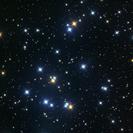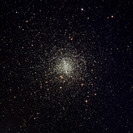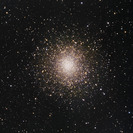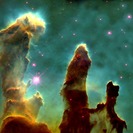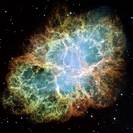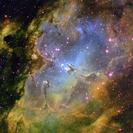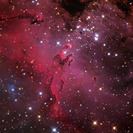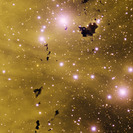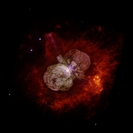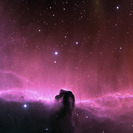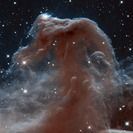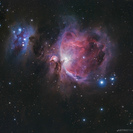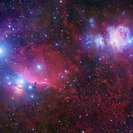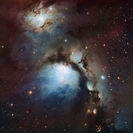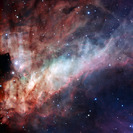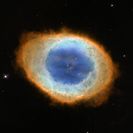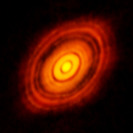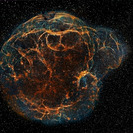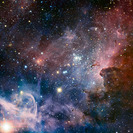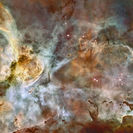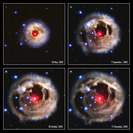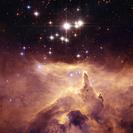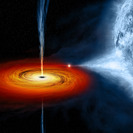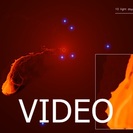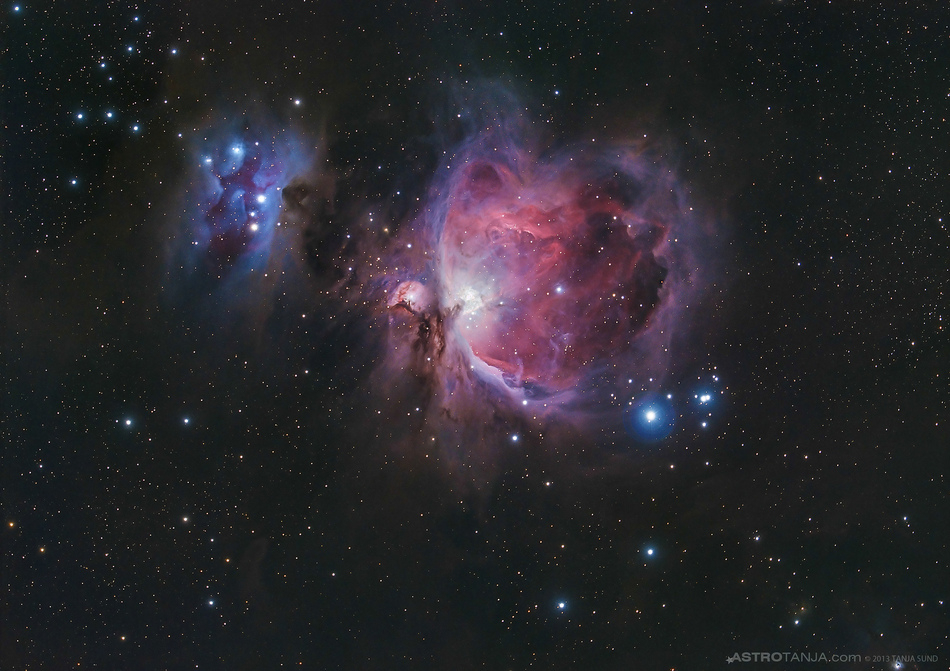With a distance of "just" 1340 light years the Great Nebula in Orion is one of the closest star-forming regions to us (a list of the nearest star-forming regions can be found in this Wikipedia article). The eye-catching reddish colour of M42 is a tell-tale sign of star formation: bright young stars excite hydrogen gas in their surrounding area, emitting photons of a characteristic frequency (the red colour) when the electrons fall back into the lower energy orbits of the hydrogen atom. The Orion Nebula is about 24 light years across and has a mass of 2000 solar masses. This 1° region of the sky features everything an astronomer can desire: hundreds of stars in all stages of formation, thousands of young stars ranging from the most massive O class stars down to brown dwarfs, huge clouds of gas and dust forming emission and reflection nebulae, many proto-planetary discs and a lot more interesting details. In about 100 000 years all the gas will either be used up by further star formation or it will be ejected from the Orion Nebula. We will then be left with an open star cluster before finally the cluster completely disintegrates over time so that all the stars with their planets will live a quiet life, just like our Sun does today.
The blue nebula on the upper left is the Running Man Nebula. It is one of the brighter objects in the night sky and can be seen - along with the Orion Nebula - with the unaided eye. If you zoom out and observe the entire scene you'll notice that M42 is just a small part of the much bigger Orion Molecular Cloud Complex spanning hundreds of light years in diameter.

